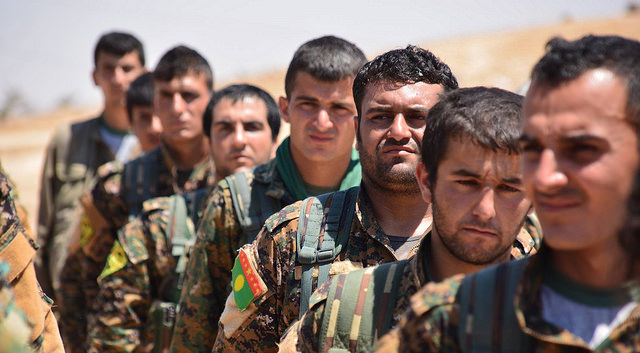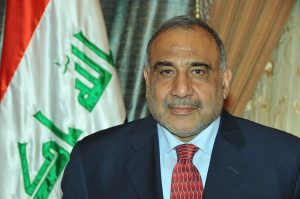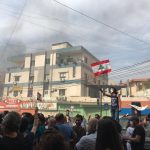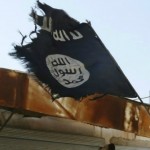by International Crisis Group
Seized by Islamic State (ISIS) militants in August 2014, Sinjar, a majority-Yazidi district on Iraq’s north-western border with Syria, has been the scene of tragedy: a genocidal campaign of killings, rape, abductions and enslavement, and the surviving community’s exodus to safer-ground camps in the adjacent Kurdish region. Incremental efforts to drive ISIS out of Sinjar, starting in November 2015, have brought peace but no political or economic recovery. The district’s occupation by a succession of Iraqi and non-Iraqi sub-state actors has militarized the population, fragmented the elites and prevented the return of the displaced. Only the effective re-entry of the Iraqi state, mediating between factions and reinstating local governance, can fully stabilize Sinjar, lay the ground-work for reconstruction, allow the displaced to return and end foreign interference.
The problems in Sinjar have their origin in the 2003 U.S. invasion of Iraq and removal of the Saddam Hussein regime. Dysfunctional governance and sectarian strife reduced the role of both the federal government and the administration of Ninewa governorate, in which Sinjar is located, to a symbolic one. Real power was exercised by the party that took advantage of the administrative and security vacuum, the Kurdistan Democratic Party (KDP). The KDP co-opted local elites to perform the routine tasks of rule. Yet it won little popularity. It treated the Yazidis, a distinct ethno-religious minority group, as Kurds, which many resent, and as second-class Kurds at that – which they resent even more. Moreover, it barely disguised its ambition, opposed by many Yazidis, to annex Sinjar to the Kurdish region.
The KDP made itself still more unpopular by withdrawing its forces from Sinjar ahead of the ISIS assault, leaving the population to the jihadists’ mercy. Affiliates of the Kurdistan Workers’ Party (PKK), a Kurdish guerrilla movement in Turkey, stepped into the breach, rescuing ISIS’s surviving Yazidi victims with the help of U.S. airpower and, over time, pushing back ISIS without, however, restoring local government. These groups then ruled parts of Sinjar, with the KDP controlling others, each recruiting local fighters into their rival militias but neglecting to serve the interests of the Sinjar population, most of whom remained displaced. The standoff between the PKK affiliates and the Turkey-backed KDP kept the area contested and unsafe.
The escalating U.S.-supported battle against ISIS in 2017 saw the return of Iraqi state security forces to northern Iraq, accompanied by Iran-backed Shiite militias, the Hashd al-Shaabi, known in English as Popular Mobilisation Units (PMUs). First, they defeated ISIS in Mosul, and then, in mid-October, following an independence referendum organised by the Kurdistan regional government (KRG) that backfired, the PMUs went further. Supported by the government of Prime Minister Haider al-Abadi, encouraged by Iran and given a green light by Turkey, they drove the KDP out of Sinjar and marginalised the PKK affiliates – Turkey’s target. (Turkey, along with the U.S. and the European Union, designates the PKK as a terrorist organisation.) The skeletal, KDP-leaning district council and administrative bodies, mainly composed of Yazidis, fled to the Iraqi Kurdish region, joining their Yazidi constituents. Rather than jumpstarting reconstruction and governance, PMU rule since October 2017 has further dispersed the Yazidi community.
As long as the Iraqi government remains weak, Sinjar will be fought over by external forces because of its strategic location close to the borders with Syria and Turkey. ISIS’s military defeat now provides an opportunity for the Abadi government, keen to regain sovereignty over all of Iraq ahead of national elections in May 2018, to set things right. Abadi should incorporate fighters of competing militias into a unified police force and restore governance via administrative institutions that open their doors to skilled local personnel regardless of which outside actor they aligned themselves with in the recent past.
Whether Abadi is capable of such an approach is an open question. The problems in Sinjar reflect the broader challenge of demobilizing militias and integrating their fighters into state security forces, lest they undermine central authority and prevent the emergence of functioning state institutions. What happens in Sinjar may thus point to the prime minister’s political fate and the country’s general direction. One potent enemy may have been defeated, but the battle for Iraq’s political soul is far from over.
This is an executive summary of a new report by the International Crisis Group available here. Photo: Yazidi soldiers (Kurdishstruggle via Flickr).





